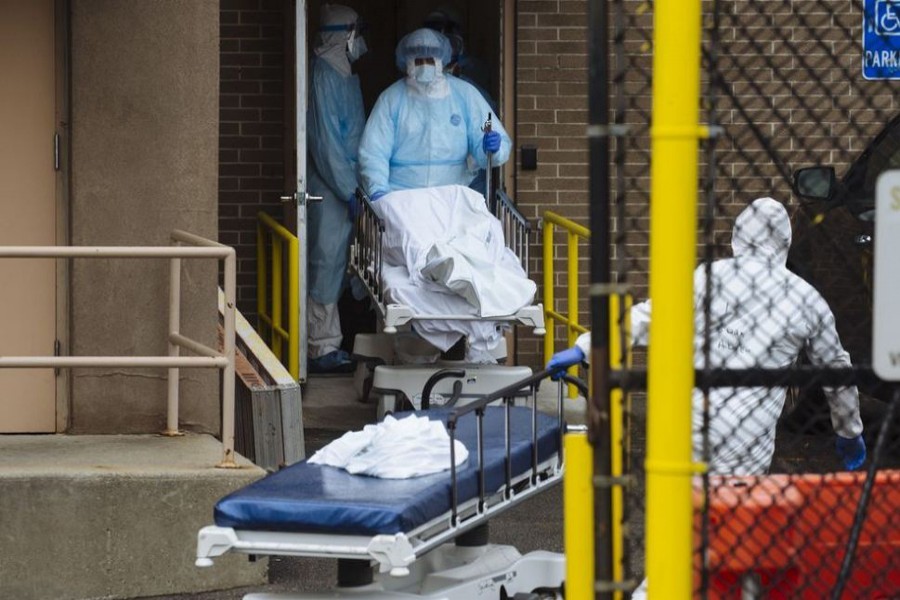A year and an ongoing coronavirus pandemic that has brought travel to a virtual halt, Jeff Hurst, the chief executive of vacation rental firm VRBO, sees a boom on the horizon.
“Every house is going to be taken this summer,” Hurst said, as the expected protection from vaccines arrives in step with warmer weather, unleashing a cooped-up population with record savings stashed away. “There’s so much built-up demand for it.”
That sort of bullish sentiment has increasingly taken root among executives, analysts and consumers who see the past year of comparative hibernation - from the government-ordered business closings last spring to continued risk avoidance by the public - giving way to a cautious re-emergence and green shoots in the economy.
Data from AirDNA, a short-term rental analytics firm, showed vacation bookings tmsnrt.rs/3uxQ1Wi for the end of March, which traditionally coincides with college spring breaks, are just 2.0 per cent below their pre-pandemic level. Employment openings on job site Indeed are 4.0 per cent above a pre-pandemic baseline. Data on retail foot traffic, air travel and seated diners at restaurants have all edged up.
And economists’ forecasts have risen en masse, with firms like Oxford Economics seeing a “juiced-up” economy hitting 7% growth this year, more typical of a developing country.
In a symbolic milestone, Major League Baseball teams took to the field on Sunday, as scheduled, for the first games of the spring training season. Crowds were required to observe social distancing rules and limited to around 20 per cent of capacity, but MLB has a full schedule penciled in following a truncated 2020 season that did not begin until July and saw teams playing in empty stadiums.
As of February 25, about 46 million people in the United States had received at least their first dose of a COVID-19 vaccine - still less than 15 per cent of the population and not enough to dampen the spread of a virus that has killed more than half a million people in the country, according to the US Centers for Disease Control and Prevention.
The emergence of coronavirus variants poses risks, and a return to normal life before immunity is widespread could give the virus a fresh foothold.
Nor is optimism global. The European short-term rental market, for example, is suffering, with tens of thousands of Airbnb offerings pulled. Up to one-fifth of the supply has disappeared in cities like Lisbon and Berlin, as owners and managers adjust to a choppy vaccine rollout and doubts about the resumption of cross-border travel.
In the United States, the vaccine rollout and a sharp decline in new cases has produced an economic outlook unthinkable a year ago when the Federal Reserve opened its emergency playbook in a terse promise of action and Congress approved the first of several rescue efforts.
The fear then was years of stunted output similar to the Great Depression of the 1930s, while some projections foresaw millions of deaths and an extended national quarantine. Instead, the first vaccines were distributed before the end of 2020, and a record fiscal and monetary intervention led to a rise in personal incomes, something unheard of in a recession.
“We are not living the downside case we were so concerned about the first half of the year,” Fed Chair Jerome Powell told lawmakers on Wednesday. “We have a prospect of getting back to a much better place in the second half of this year.”
‘ROCK ON’
US gross domestic product, the broadest measure of economic output, may top its pre-pandemic level this summer, approaching the “V-shaped” rebound that seemed unrealistic a few weeks ago.
That would still mean more than a year of lost growth, but nevertheless represents a recovery twice as fast as the rebound from the 2007-2009 recession.
Jobs have not followed as fast. The economy remains about 10 million positions short of where it was in February 2020, and that hole remains a pressing problem for policymakers alongside getting schools and public services fully reopened.
It took six years after the last recession to reach the prior employment peak, a glacial process officials desperately want to shorten.


